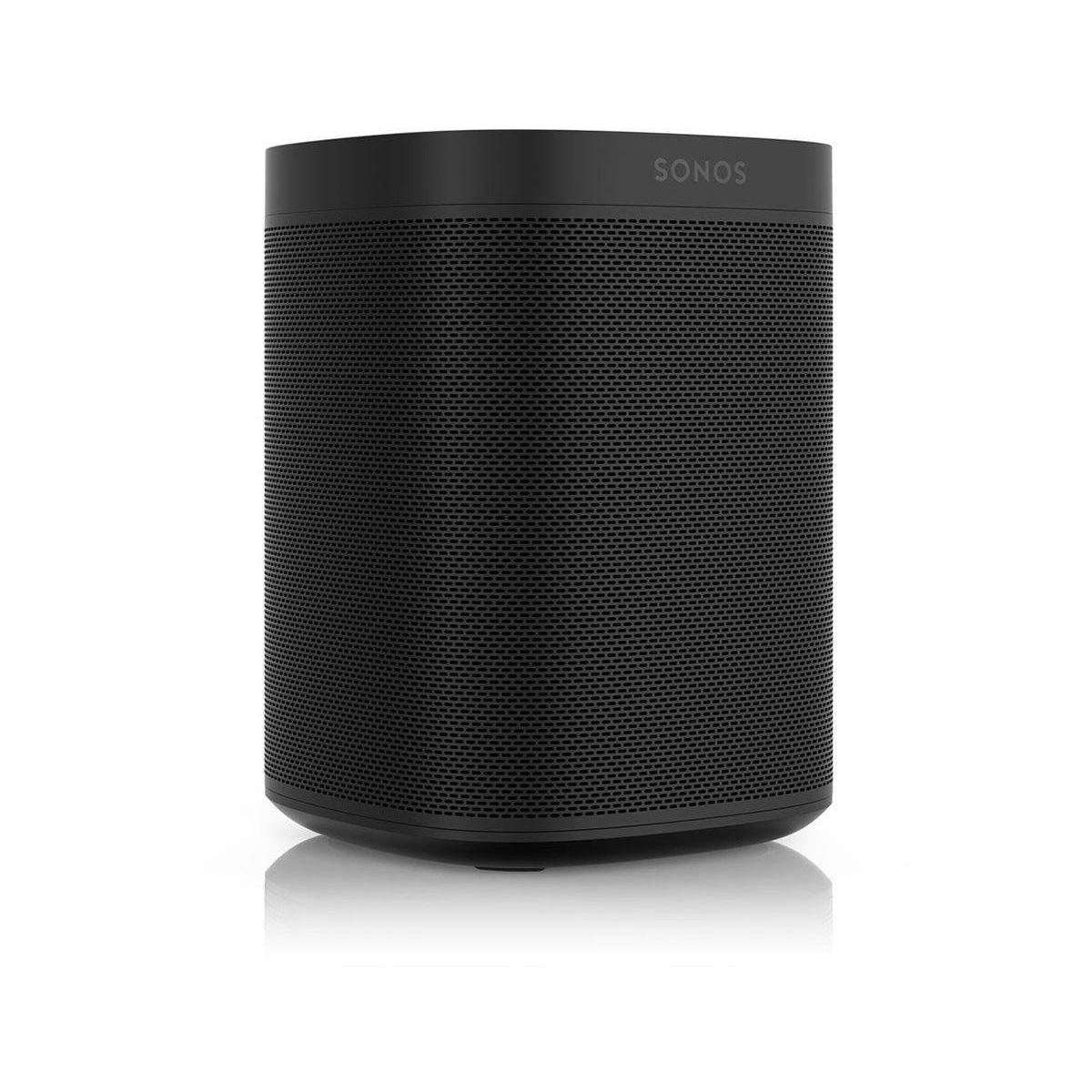

If you want something with even better microphone and voice-recognition abilities, the Amazon Echo 4th Gen is the best smart speaker with the smarts in mind, in T3's view. It doesn't just sound excellent for the money, it's also a great package of features overall – and it's a great start to your multi-room speaker collection. The Sonos One is undoubtedly the best wireless speaker in its size and price bracket – and offering both Alexa and Google Assistant support makes it one of the most versatile smart speakers, too. (Image credit: Sonos One) Sonos One review: Verdict If you want a stereo presentation with hi-fi quality sound, two Sonos One speakers is stunningly good value, I have to say. Pairing two into stereo doesn't add a huge amount to the sound, other than filling a room more easily than one, and adding distinct left/right effects when you're between them. The treble stands out from the mid mix nicely, and the Sonos One can be crisp without getting too harsh with it. Mids are warm while still feeling accurate, and even when songs get complex, it feels every individual part is well-defined. There isn't a huge amount of bass, but it's no worse in this regard than other speakers of its size – you have to step up a bit to something like the Naim Mu-so Qb 2nd Gen (which is three times the price and notably larger) for a real improvement in this area.Įven if it can't dig too deep, the overall soundstage absolutely feels representative and well-balanced. Vocals are clear and elevate from the music, while individual instruments dance out of the overall mix clearly. The Sonos One really impresses with how nimble and clear it is. (Image credit: Sonos) Sonos One review: Sound quality

And there are still buttons (well, touch controls) on the top of the Sonos One, so there's always that option, too. Sonos wants to be the default musical part of your smart home, and the output for whatever content streaming services you happen to favour.ĭespite that, it has now spruced up its own app, which now promises to offer easier access to your music and less head-bangingly irritating control of multi-room.Īs an extra-cool feature, as you use Alexa to use music, the Sonos app updates to show that, letting you move seamlessly between voice and mobile control. Sonos, in short, has fully abandoned its original, walled garden approach so its largely excellent speakers can act as the output for all the key music services. If you have non-Sonos AirPlay speakers (such as the HomePod Mini), you can even use the Sonos One in a multi-room system that mixes and matches speakers from different makers over AirPlay. The whole Sonos range also supports Apple AirPlay 2, which means that if you have Apple gear, you can use that as your streaming method of choice, which includes its own multi-room support. Sonos speakers now support over 100 3rd party streaming services – mainly music, but also smart home – with more rolling out via an open API and 'favoured partner' programme on an ongoing basis.

It's all very seamless to do – it's very impressive. You can pair two Sonos One speakers in stereo to use them as a wireless alternative to bookshelf speakers, or use them as rear speakers in a surround sound setup with a Sonos Beam or Sonos Arc soundbar. You can use voice commands to get tunes from services that work with the available voice assistants, but you can also tell the speaker to play through your other Sonos speakers ("Play Lady Gaga in the kitchen"), even if they are older ones that are not Alexa-compatible. It is a true 'platform' rather than just a Wi-Fi speaker with knobs on, as Sonoses (Soni?) had previously been. The boosted processing power has enabled it to be updated and adapted over time – Google Assistant support was added more recently than its original Alexa support, for example. The most important parts are the quad-core processor and six-mic array letting it serve as an AI assistant as well as a multi-room wireless speaker.


 0 kommentar(er)
0 kommentar(er)
